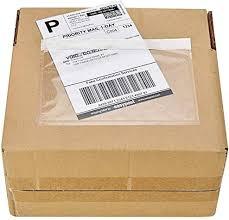

Step 1: Choose the Right Box
Make sure the box is sturdy and appropriate for the size and weight of your item. Reuse boxes only if they are in good condition and have no signs of wear and tear.

Step 2: Protect Your Items
Use bubble wrap, foam peanuts, or other cushioning materials to protect fragile items. Fill all empty spaces in the box to prevent movement.

Step 3: Seal the Package Securely
Use strong tape to seal all seams of the box. Reinforce the edges for extra security. Avoid using string or paper over-wrap, as they can get caught in automated sorting equipment.

Step 4: Label Your Package Clearly
Write the destination and return addresses clearly on the package. Use a label or directly write on the box with a permanent marker.
Packaging Guidelines by Item Type
Non-Fragile Items
For non-fragile items such as books, clothes, and electronics, ensure that the items are securely packed in a box that fits their size. Use a box that can hold the weight of the items without bending or breaking. Filling any voids with packing material to prevent movement is essential.
Fragile Items
Fragile items, like glassware, ceramics, or electronics, require extra care. Wrap each item individually with bubble wrap or foam. Place the wrapped item in the center of the box and surround it with cushioning materials like foam peanuts or air cushions. Ensure that the item does not touch the box's walls, reducing the risk of breakage during transit.
Consider double boxing for added protection: place the first box containing the wrapped item inside a second, larger box filled with more cushioning materials.
Pallets (Freight)
For shipping large items or bulk shipments, palletizing your cargo is essential. Secure the items on a pallet using straps, shrink wrap, or both. Ensure the weight is evenly distributed, and the items are not overhanging the pallet's edges.
Use corner protectors to prevent damage to the edges of the items. Label the pallet clearly with the destination address, and if applicable, mark the pallet as "Heavy" to alert handlers.
Additional Tips for Packing Valuables
When packing valuables, always take extra precautions to ensure their safety. Here are some additional tips to keep in mind:
Plan Ahead: Start packing early to avoid last-minute stress. This gives you time to gather all necessary materials and pack items carefully.
Inventory and Document: Keep a detailed inventory of all valuable items. Take photographs before packing, which can be useful if you need to file an insurance claim.
Disassemble When Possible: If the item can be safely disassembled, do so. Wrap each part separately and label them for easy reassembly.
Seal and Reinforce: Ensure that all boxes are securely sealed with strong tape. Reinforce the bottom of the boxes to prevent them from collapsing under the weight of the contents.
Following these steps will help ensure that your valuables are well-protected and arrive at their destination in the same condition as when they were packed.